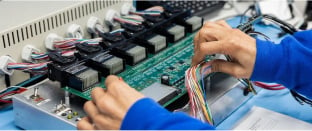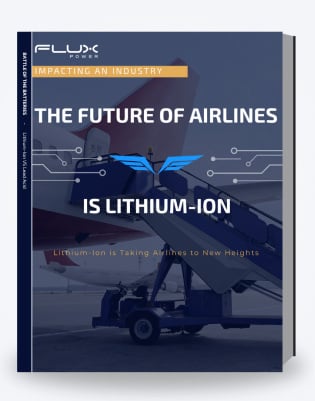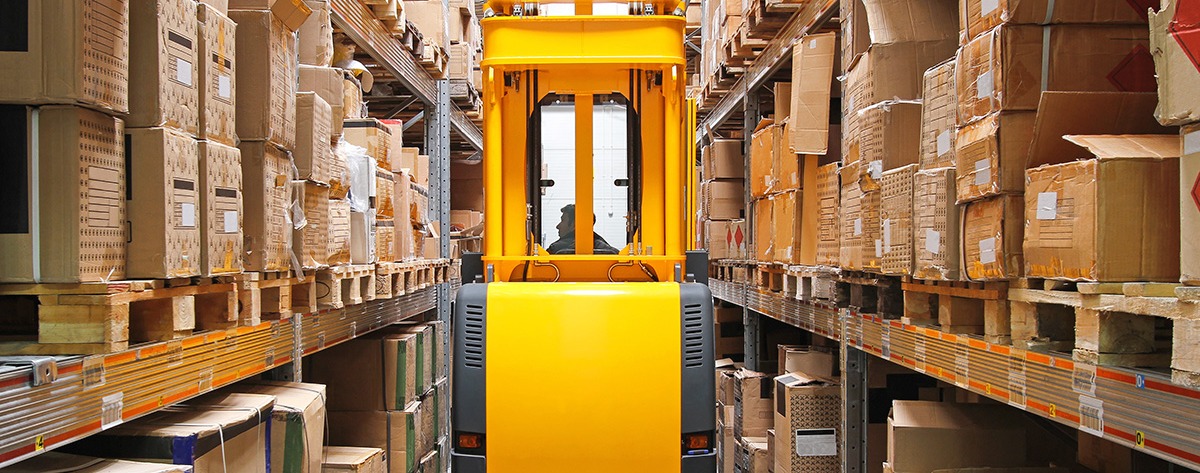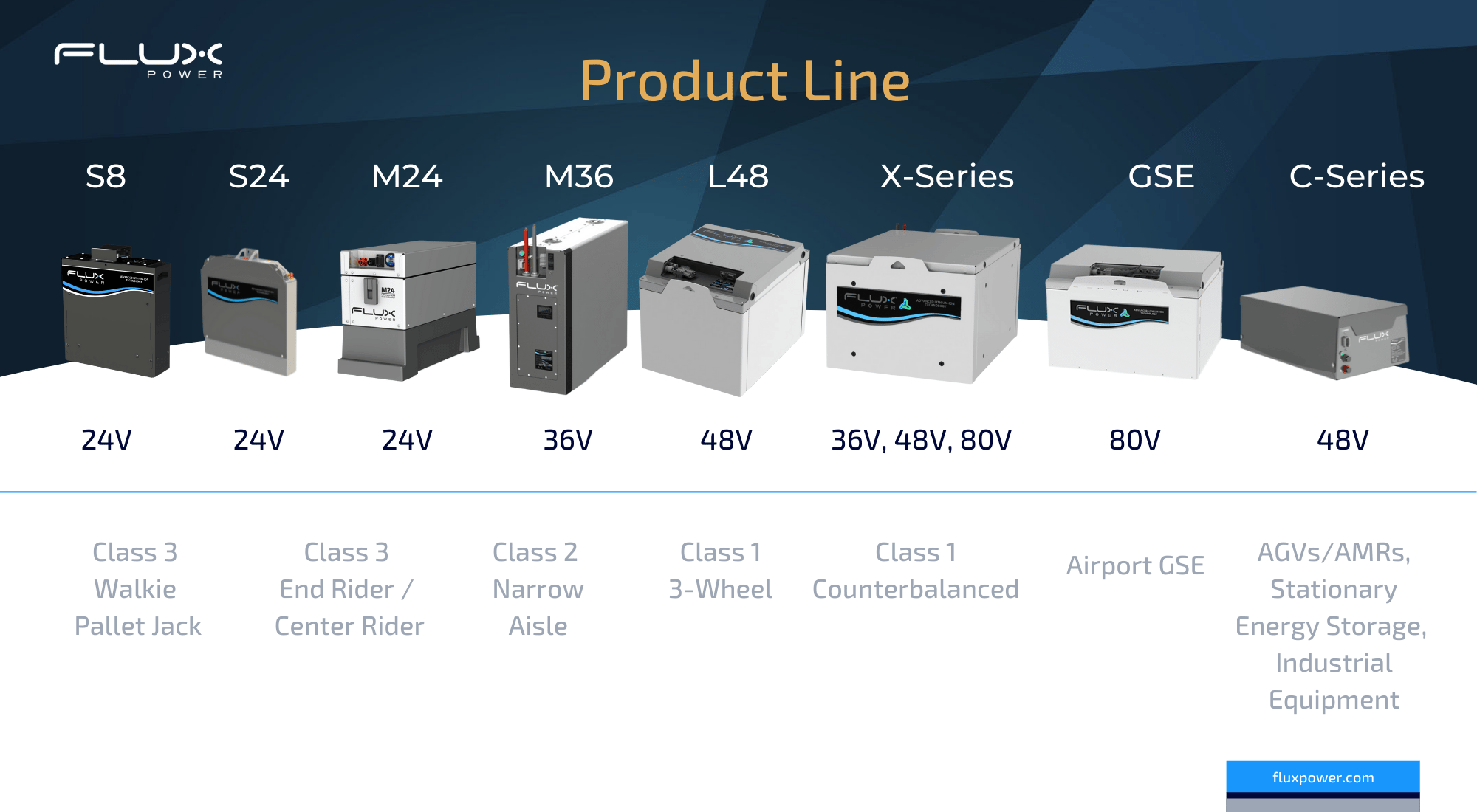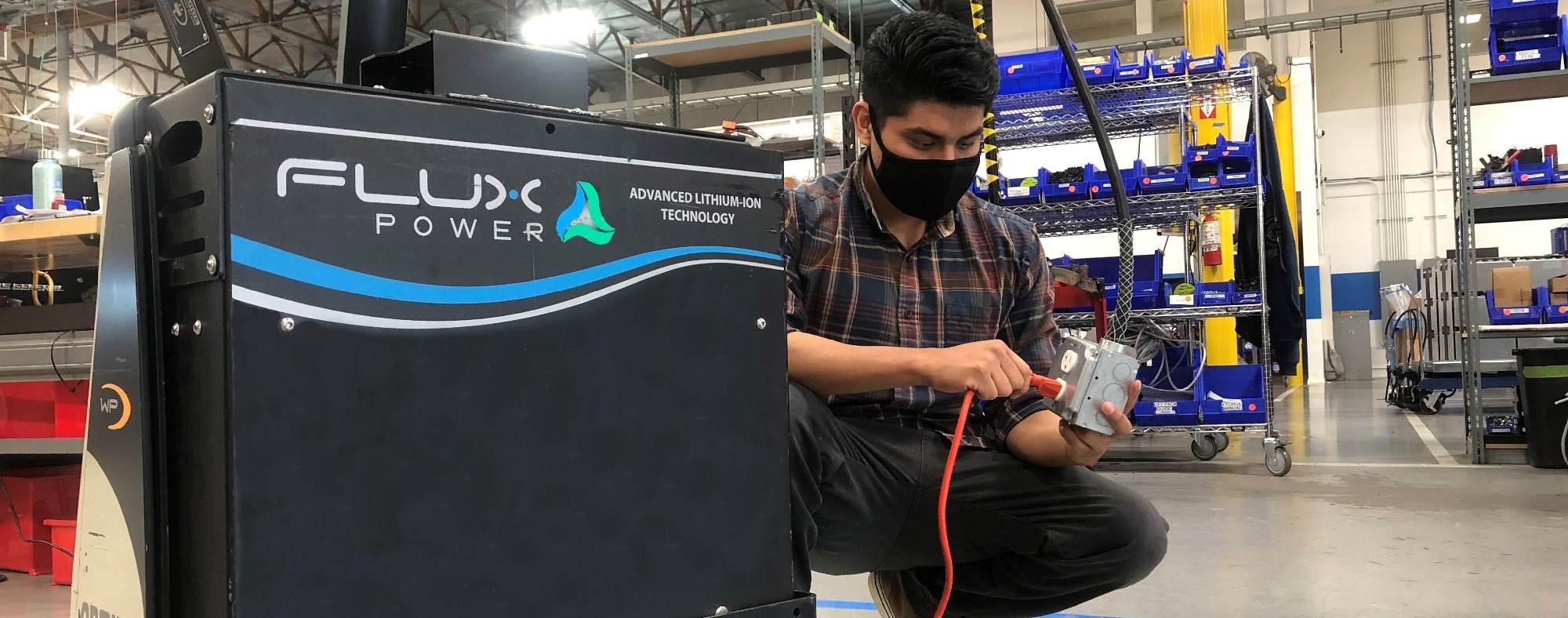After determining which size battery is compatible with your forklift, the next important consideration is using: lithium-ion forklift batteries vs lead acid forklift batteries.
Electric forklifts are generally powered by either of these two main types of batteries:
While there are other power options for forklifts, such as propane or diesel, or gas power, 2/3rds that are put into service each year are electric.
The technology behind each of these industrial batteries differs greatly, and therefore, has a different impact on forklift efficiency.
Lead acid batteries are the old-school standard for powering forklifts. They are bulky, liquid-filled units with a removable top that generates electricity via a chemical reaction of lead plates and sulfuric acid. Its technology goes back to 1859 and involves regularly refilling the units with water (which is also necessary for the electricity-generating chemical processes happening within). Lithium-ion batteries are a newer technology, having been first used in a commercial product in the early 1990s, a Sony camcorder. Lithium-ion batteries have many different chemistries. One of the most popular chemistries for the material handling industry is lithium iron phosphate (LFP). Lithium-ion forklift batteries are more compact and energy dense than lead acid batteries. The cells are sealed shut and require no water maintenance.
Length of a Forklift Battery’s Service Life
Like any business expense, electric forklift batteries are a cost that needs to be dealt with regularly.
Which type of battery a company uses in its forklifts determines how often workers will have to replace the battery. Lead acid and lithium-ion batteries have different lifespans:
These are averages and may vary based on how well the batteries are maintained.
A lithium-ion forklift battery needs to be replaced less frequently, which is a major driver for business owners to prefer them to conventional lead acid batteries – which need to be replaced out for new ones more often.
Maintaining Forklift Battery Capacity
Both lithium-ion batteries and their lead acid counterparts should be cared for properly if they are to perform up to their full potential. Their service life will diminish if proper forklift battery maintenance is not carried out as it should be.
In order to maximize service life and overall battery capacity, certain measures should be taken for users of both battery types. However, lead acid batteries require more care and attention compared to lithium-ion batteries.
Lead acid forklift batteries require:
-
Equalizing (Cell Balancing): Traditional technology like this leads to a frequent state where the acid and water inside become stratified (separated horizontally with the acid more concentrated closer to the bottom). This state forms sulfate crystals towards the bottom of the cells and weakens their ability to hold a charge. Equalizing will break up the sulfate crystals but if the battery has been neglected for too long the crystals will not break.
-
Temperature Control: Lead acid batteries must be kept within a certain temperature range, or else they will have a shorter working life. On top of that, they also get very hot while charging, which requires them to be charged and stored in a temperature-controlled space.
-
Fluid Level Management: These types of units must be checked to ensure they have enough water about once every 10 or so charging cycles.
Lithium-ion batteries are much less needy when it comes to forklift battery maintenance, as they equalize automatically, function well in much higher temperatures (making temperature mostly a non-issue), and do not require any fluid level management.
For comparison:

Cell Balancing: The equalization of voltages and state of charge among the cells within a battery when they are at full charge. This is a practice that preserves the capacity of a battery pack with multiple cells.
Battery Capacity: How much current can be drawn from a battery. Capacity is measured in units of amp-hours (Ah).
Lead Acid Battery: A rechargeable type of battery that contains lead plates immersed in a sulfuric acid solution. The chemical reaction creates an electrical current used to power equipment.
Lithium-Ion Battery: A rechargeable type of battery that contains lithium ions which move through an electrolyte to create electricity to power equipment. Unlike lead acid batteries, the electrolyte is permanently sealed in a lithium-ion battery pack.
Thermal Runaway: When heat generated in a battery exceeds the amount of heat that is dissipated to its surroundings. In batteries, this occurs when a cell exceeds a specific high temperature which varies by chemical composition, because of thermal failure, mechanical failure, short circuiting, or electrochemical abuse.
Electric Forklift: A forklift that is powered by a battery, used for handling materials in warehouses, distribution centers, etc.
Battery Efficiency: The amount of energy that a battery delivers compared to the amount of energy that is put into it during charging. Factors that affect battery efficiency include charge current, resistance, battery temperature, and battery age.
Battery Discharge Rate: The amount of current divided by time it takes to discharge a battery. It is defined as the stable current in amperes (A) that is taken from a battery of specified capacity (Ah) over a period of time.
Battery Lifespan: How long a battery can operate during its life. Lifespan is measured by the number of charge and discharge cycles it has until the end of its life.
Battery Electrolyte Level: Battery electrolyte is the liquid substance that is found in lead acid batteries. The battery electrolyte is made up of water and sulfuric acid and is known to be highly corrosive. An important part of lead acid battery maintenance is checking the battery electrolyte levels to see if it needs to be topped off using distilled water. This process helps to prolong the lead acid battery’s life.

